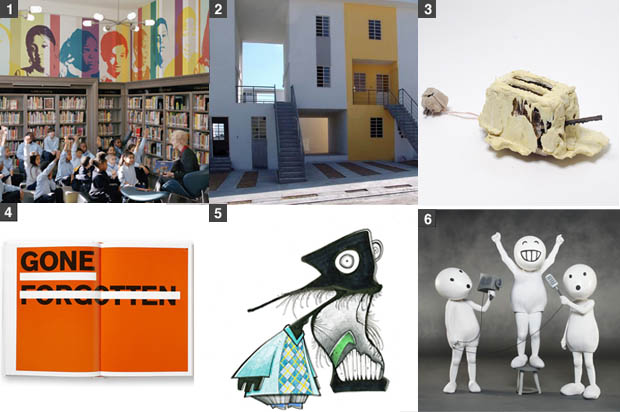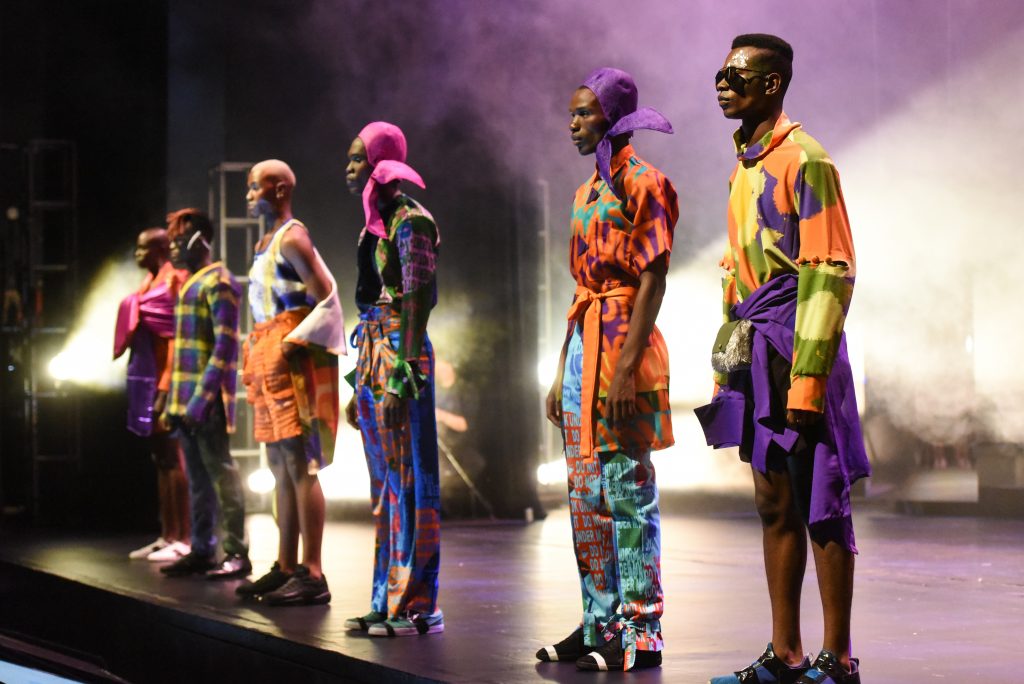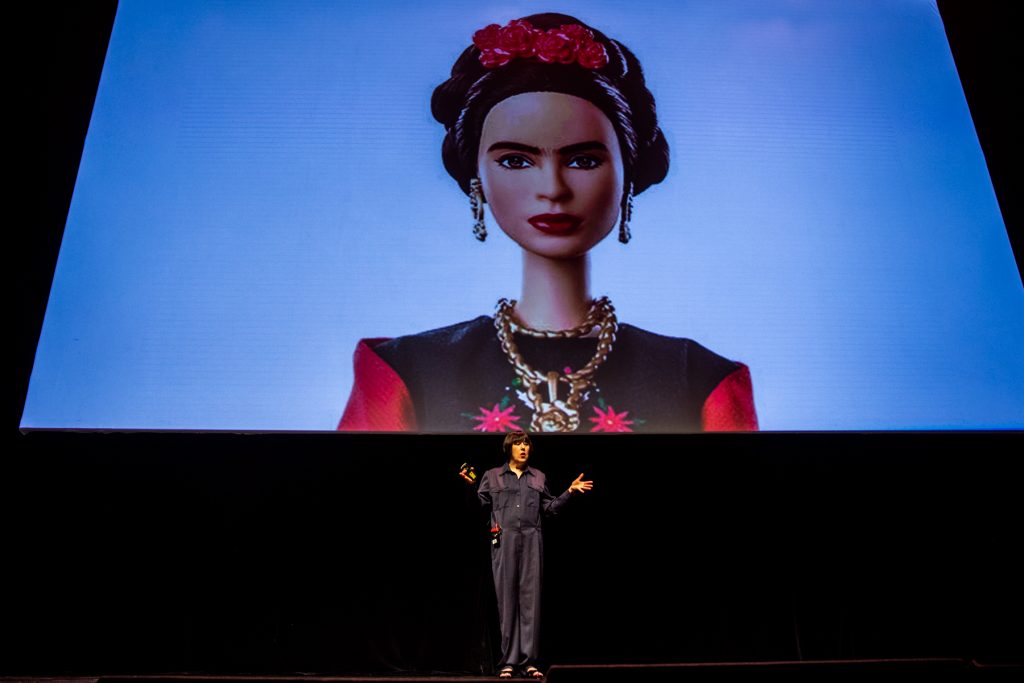Design Indaba Conference 2010
Highlights from the 15th year of South Africa’s premier creative event


Playing to the mounting excitement of South Africa’s upcoming World Cup, last month’s Design Indaba conference in Cape Town was billed as something of a major sports event in its own right with colorful banners, stadium cheer-worthy introductions and even trading cards for the visiting speakers. Talks covered dozens of intriguing projects—from the likes of Tord Boontje, Ronan Bouroullec, Manabu Mizuno, Han Feng and Mokena Makeka—and participants ran the gamut from veteran to rookie, guru to diva, and far-flung to homegrown.
Here, we’ve singled out a handful of presentations for their memorable insight into both the creative life and the world at large, along with soundbites, and other projects worth checking out.
Our hats off to founder Ravi Naidoo, a consummate host whose boundless energy, unparalleled enthusiasm, and belief in the transforming power of creativity is truly inspiring.
Read on after the jump.

1. The importance of humility
Always a great speaker, Pentagram partner Michael Beirut set the bar high with his thoughtful opening presentation. Instead of a sweeping career survey, Beirut focused on one assignment with the hope of sharing a fundamental lesson in project management. His presentation, called “My favorite project and how I almost blew it,” detailed his distinguished work with the The Robin Hood Foundation on The Library Initiative, a program to revitalize libraries in New York’s most disadvantaged public schools.
To summarize Beirut’s lessons in humility:
Don’t try to be so darned clever.
You get power by giving away power.
The real opportunity my not lie within your scope.
Consistency is not always good.
The audience is more wonderful than you think.
2. The virtues of limitations
One of the few speakers to receive a standing ovation at the conference, Chilean architect Alejandro Aravena provided a laudable rejoinder to Martha Stewart’s strikingly vainglorious presentation. Aravena, principal of the award-winning firm Elemental, gave an impassioned speech on his efforts in developing affordable community housing in Chile and Mexico. The design solution, half-finished structures that allow for self-build expansion, held particular resonance for the largely South African audience, confronted as they are with how to rectify the housing deficiencies of the country’s many impoverished townships.
3. The value of a narrative
A recent graduate of the Royal College of Arts in London, Thomas Thwaites provided the most hysterical six minutes of the Design Indaba conference. In recounting his 2009 thesis, The Toaster Project, Thwaites had the audience in stitches over his attempt to manufacture a toaster from scratch, right down to procuring the raw materials copper, nickel, mica and plastic. While the real aim of the project was to examine the absurdity of scale in the industrial processes that lead to a £5.00 consumer toaster—Thwaites’ toaster looks more like a nightmarish wax model of the thing itself—an unintended consequence may be a career in television for this graduate. Thwaites has all the makings of a engaging storyteller.
4. The wonders of serendipity
In recounting his prolific career to date, Harry Pearce of Pentagram U.K. returned again and again to the notion that things can take on a life of their own. From his work on the Dana Centre and Peter Gabriel’s Witness program to his latest book project on typographic conundrums, Pearce’s career has been filled with the kind of serendipitous moments usually reserved for a Paul Auster story. The takeaway: the seeds of creativity are sown in the most unlikely of places.
5. The joys of doing what you love
Graphic designer Stefan Bucher, principal of 344 Design and creator of the off the wall Daily Monster, gave a fervent talk rife with sardonic humor. At the heart of his presentation was the concept of knowing your operating system, or what feeds your creativity. For Bucher, this translates into several working strategies: workarounds (obsessive compulsive design strategies that let the mind go on autopilot), repair permissions (infusing projects with personal relevance), and greed control (limiting one’s desire for money to focus on work that one loves). The result of that last bit happens to be Bucher’s Monsters, a pet project that has, not surprisingly, developed a massive following.
6. The merits of humor
Executive chairman and national creative director for Ogilvy & Mather India, Piyush Pandey has been hailed as the most influential man in Indian advertising—for good reason. Pandey gave one of the most entertaining presentations of the conference, showcasing a selection of hilarious commercials representative of his approach.
In a nation with over 30 spoken languages, the task of communicating a coordinated brand message seems insurmountable. Nevertheless, at the core of Pandey’s work is the ability to connect with an incredibly diverse audience through emotional storytelling. His favorite emotion, humor, plays a central role in many of his campaigns, including the Vodafone Zoozoo shorts, which have become India’s most popular ads to date. (Its official Facebook fan club is nearly 400,000 strong). Take a moment to watch a compilation of the ad shorts here, you won’t be disappointed.
Six more projects worth checking out
1. Troika’s All the Time in the World
2. Christien Meindertsma’s Pig 05049
3. Bill Drentel’s (of Winterhouse) Polling Place Project
4. Handspring Puppet Company’s work on the renowned production War Horse
5. Marcelo Rosenbaum’s Brazil line for Oxford
6. Revital Cohen’s Electrolyte Appendix concept
Six memorable quotes
1. “Cities need unauthorized acts of creativity.” —Wooster Collective’s Marc and Sara Schiller
2. “I believe there is life beyond logic.” —Piyush Pandey
3. “Do we change the world to suit us, or change ourselves to suit the world?” —Fiona Raby
4. “We should build half of a good house, instead of a small one.” — Alejandro Aravena
5. “Form follows fiction is more important than form follows function.” —Jurgen Bey
6. “Your brain is like an unruly pitbull; it will chew up your furniture at best.” —Stefan Bucher












